Evolution of haploid and diploid populations reveals common, strong, and variable pleiotropic effects in non-home environments
- PMID: 37861305
- PMCID: PMC10629826
- DOI: 10.7554/eLife.92899
Evolution of haploid and diploid populations reveals common, strong, and variable pleiotropic effects in non-home environments
Abstract
Adaptation is driven by the selection for beneficial mutations that provide a fitness advantage in the specific environment in which a population is evolving. However, environments are rarely constant or predictable. When an organism well adapted to one environment finds itself in another, pleiotropic effects of mutations that made it well adapted to its former environment will affect its success. To better understand such pleiotropic effects, we evolved both haploid and diploid barcoded budding yeast populations in multiple environments, isolated adaptive clones, and then determined the fitness effects of adaptive mutations in 'non-home' environments in which they were not selected. We find that pleiotropy is common, with most adaptive evolved lineages showing fitness effects in non-home environments. Consistent with other studies, we find that these pleiotropic effects are unpredictable: they are beneficial in some environments and deleterious in others. However, we do find that lineages with adaptive mutations in the same genes tend to show similar pleiotropic effects. We also find that ploidy influences the observed adaptive mutational spectra in a condition-specific fashion. In some conditions, haploids and diploids are selected with adaptive mutations in identical genes, while in others they accumulate mutations in almost completely disjoint sets of genes.
Keywords: S. cerevisiae; evolution; evolutionary biology; genetics; genomics; pleiotropy; trade-offs; yeast.
© 2023, Chen, Johnson, Hérissant et al.
Conflict of interest statement
VC, MJ, LH, PH, DY, YL, AA, SH, DP, MD, GS No competing interests declared
Figures


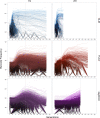


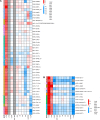

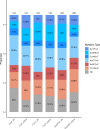
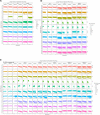
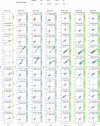

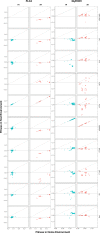


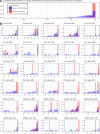

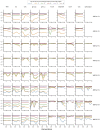
Update of
- doi: 10.1101/2023.02.28.530341
Similar articles
-
Dynamics and variability in the pleiotropic effects of adaptation in laboratory budding yeast populations.Elife. 2021 Oct 1;10:e70918. doi: 10.7554/eLife.70918. Elife. 2021. PMID: 34596043 Free PMC article.
-
Haploids adapt faster than diploids across a range of environments.J Evol Biol. 2011 Mar;24(3):531-40. doi: 10.1111/j.1420-9101.2010.02188.x. Epub 2010 Dec 16. J Evol Biol. 2011. PMID: 21159002
-
Fitness variation across subtle environmental perturbations reveals local modularity and global pleiotropy of adaptation.Elife. 2020 Dec 2;9:e61271. doi: 10.7554/eLife.61271. Elife. 2020. PMID: 33263280 Free PMC article.
-
Overdominant and partially dominant mutations drive clonal adaptation in diploid Saccharomyces cerevisiae.Genetics. 2022 May 31;221(2):iyac061. doi: 10.1093/genetics/iyac061. Genetics. 2022. PMID: 35435209 Free PMC article.
-
Experimental studies on ploidy evolution in yeast.FEMS Microbiol Lett. 2004 Apr 15;233(2):187-92. doi: 10.1111/j.1574-6968.2004.tb09481.x. FEMS Microbiol Lett. 2004. PMID: 15108721 Review.
Cited by
-
Convergent genetic adaptation of Escherichia coli in minimal media leads to pleiotropic divergence.Front Mol Biosci. 2024 Apr 10;11:1286824. doi: 10.3389/fmolb.2024.1286824. eCollection 2024. Front Mol Biosci. 2024. PMID: 38660375 Free PMC article.
-
Distinguishing mutants that resist drugs via different mechanisms by examining fitness tradeoffs.Elife. 2024 Sep 10;13:RP94144. doi: 10.7554/eLife.94144. Elife. 2024. PMID: 39255191 Free PMC article.
-
Distinguishing mutants that resist drugs via different mechanisms by examining fitness tradeoffs.bioRxiv [Preprint]. 2024 Jun 11:2023.10.17.562616. doi: 10.1101/2023.10.17.562616. bioRxiv. 2024. Update in: Elife. 2024 Sep 10;13:RP94144. doi: 10.7554/eLife.94144. PMID: 37905147 Free PMC article. Updated. Preprint.
-
Improving the Accuracy of Bulk Fitness Assays by Correcting Barcode Processing Biases.Mol Biol Evol. 2024 Aug 2;41(8):msae152. doi: 10.1093/molbev/msae152. Mol Biol Evol. 2024. PMID: 39041198 Free PMC article.

